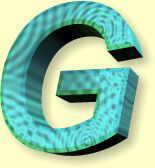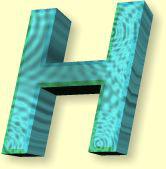|
The Greek Cypriot Lexicon |
||||||||
 |
||||||||
A donkey. (Equus asinus) This was in truth the perfect form of transport for Cyprus & was used
quite commonly until twenty years ago in the more rural areas. Its major advantages were:
1. Being run over by a donkey seldom killed anyone. 2. However drunk you may be, the donkey will still get you home without killing you or any other road users.
3. All donkeys look & perform more or less the same & are therefore of little use as
4. Donkeys do not exceed the 100 kilometer an hour speed limits on the motorways. 5. A donkey will not permit the fitting of Roo bars & fog lamps to its harness or its person.
6. Rolling a donkey does not result in it becoming an insurance write-off 7. Donkeys require neither tax nor insurance. 8. A donkey knows better than to overtake on the inside lane.
9. A donkey tells you if it is grossly overloaded. 10. Within limits, a donkey will repair itself.
Despite these laudable qualities, the word gaithouros is now more commonly used to describe a slow witted & stubborn rustic. A more dense & intransigent than usual This is puzzling as from the above it seems that the donkey was probably brighter intellectually than the person riding it, but this is not a point of view we
recommend advertising. It is however worth remembering. A male cat. (Gatta f.) In antiquity, Saint Irene was said to have brought the cat to the island of Cyprus in
order to cut down the snake population with which the island was cursed. Where she landed is still known as Kapo Kato, "Cape Cat". Snakes were & are a problem as Cyprus boasts a local breed of
viper (Vipera Leventia) with an extremely poisonous bite locally known as a fina. (The snake, not the bite.) This short, broad-headed brown snake is definitely to be avoided, as it is one of the
Mediterranean's most lethal reptiles. In return for this rescue, the locals have set about exterminating these vermin by shooting them, recklessly or maliciously poisoning it with pesticides, encouraging their
children to pursue them with sticks, flushing the young down the toilet & otherwise making the cat feel less than welcome, whilst still expressing gratitude to the saint for her thoughtfulness.
For a possible explanation for this paradox, please refer to Gineeh "The Hunt" Hunting is a major seasonal sport in Cyprus all undeterred by the fact that there is very little
left there to shoot. Wolves are extinct as of about 1911, the Mouflon sheep (Cyprus' national animal) is shortly to join them & shepherds get irritable when their more domesticated charges go down riddled in a hail
of lead shot. This leaves only the rabbit, the hare (borderline extinct), & a variety of protected species of bird, among them several varieties of partridge, such as francolin, & other game birds, including
snipe, quail, woodcock, & plover. These are blasted mercilessly from their natural habitat from August to December when they erroneously pause on the island during seasonal migrations.
The major characteristic to discriminate the Cypriot ginigoss from the European hunter is his "scorched earth / blitzkrieg" approach to the sport. Camouflage greens from head to foot are the order of
the day with matching laden ammunition belt details. A brace of partridges dangling from the belt & preferably dripping blood down your leg is optional. The latest fully automatic five-shot gun is obligatory with a
copious supply of heavyest-duty cartridges despite the fact that the largest legally available target probably weighs less than three kilos. Not that targets are a problem. Road signs, trees, cars, fellow hunters,
incautious hikers/tourists, passing aircraft & children down to four years of age have all been seen as fair game. The twitching of a branch or the rustling of a bush are both signals for a prolonged &
thunderous barrage of flame & shot belching from the weapons of eight or ten different protagonists before ever a target emerges from cover into a still warm crater filled with the reek of cordite & brimming
with smoke. It then has its fragments fought over by the hunters' dogs. It is argued that the only factors limiting this yearly carnage are:
1. The reluctance of the hunters to accidentally shoot their expensive dogs, thus engendering at least a trace of caution 2. The fact that shot guns are fashionable, rather than rifles, automatic
weapons or anything wire-guided. 3. Gleeful reports by the television stations of the most amusing/fatal accidents of the day in prime time broadcasts. It is embarrassing to be nationally hailed
as the man who did not know the difference between a 4. Appalling standards of marksmanship. 5. There is very little left to shoot.
Other activities peripheral to doh gineeh are worthy of comment. The habit of bringing along their wives to steal sack loads of olives or oranges from the local pervolia (orchards), the ownership
of pairs of huge, slavering pointer dogs in minuscule cages that terrify the local children & are thoroughly pungent in the heat of summer plus children of four years & upwards with lead shot embedded in various
parts of their anatomy. The only advice to be offered in this area is during the hunting season,
1. Stay away from countryside areas. 2. Dress in conspicuous colours & when driving play the radio loudly.
3. When leaving for home, ask the pilot to gain as much height as he can as quickly as possible. An old woman. These ladies frequently are seen in the villages of Cyprus dressed in black & gossiping
discretely & saying Panayia moo* repeatedly whilst prodding the ground with their bastooneys**
for emphasis. They are slow moving & frail looking but it is best not to be deceived. Despite posessing a carrier bag full of prescription drugs from which they select a generous ration each day, they
rise with the sun & have done a full days work, sometimes in the fields, by the time their more modern Whilst marked exceptions do exist, they are hospitable, generous with the little they have, independent & borderline indestructible. Ask them for a glass of water & they may well offer you lunch. It is
permissible to refer to them as Thia or Yiayia (Auntie or Grandma, dependant on your age relative to theirs) & to ponder why, with such ancestors, the modern Cypriots are as we find them today. *
**
Walking sticks, usually home made from either a length of broom handle or the branch of a tree Gouloufos A peasant. This term is more commonly used to describe disparagingly persons from a rural background rather than the
urban areas. The word horkados (Horko – a village) is a synonym. Use it with discretion, however, as it is best to avoid insulting people in Cyprus lest they try to run you over with their thiplowgambina (non-accidentally this time) & especially since the difference between the gouloufi
(pl.) & their more sophisticated cousins are sometimes subtle. As a guide only, we offer the following points.
1.Gouloufi are the ones who own tractors & tend to sleep with blood relations. 2.Non- gouloufi are ostentatious |
||||||||
 |
||||||||
Dance, or rather the terpsichorean* arts in general. Traditional Greek/Cypriot dances tend to be fairly rigidly structured requiring a series of steps to be memorized and then performed with varying degrees of grace or athleticism. These dances are rarely performed except on national holidays or else on TV talent contests, usually without success. The average Greek "dance" is a simpler affair that is most frequently performed at weddings and generally when under the influence of alcohol. For the convenience of the potential "dancer", it may be broken down into the following stages. 1. The dancer should saunter onto the floor minus his jacket. This may be tucked deftly into his belt (by the collar) as he takes the floor with the air of one preparing seriously for action. A colleague may accompany them in order to kneel laboriously on one knee on the floor outside the immediate radius of the dancer's activities. This individual claps rhythmically to emphasize the performance and is permitted to shout "Opah" occasionally at moments of peak artistic expression.2. The dancer's arms are held half aloft as if wading waist-deep through water and the head turned slightly as if to avoid the splashes 3. A series of stumbling, jumping, hopping or sliding maneuvers is performed in a variety of directions around the available floor space to (approximately) the rhythm of the music. The dancer must continue to face forward at all times, laughing or smiling is not permitted. If they turn, it must be with deliberation and precision 108 degrees to his previous orientation and is usually accompanied by an "Opah " of more than usual emphasis. (It is worthy of note that whilst a woman may "opah" for a man, for a man to "opah" for a woman is unheard of) 4. When the music is concluded the dancer leaves the floor. He will not acknowledge either applause or even his clapper/"Opah" man at this time presumably due to either the depth of his post-horos emotional state or else lack of wind after his enthusiastic if cumbersome efforts. Appalling technique, lack of rhythm or even having your shoelaces knotted together by mischievous paithia need not keep you from the floor. The air to be cultivated for a male is that of an individual of depth and sensitivity driven to express himself in dance by the power of the music, which considering the volume it is usually played at is quite believable. Your deficiencies (if any) may be camouflaged by the occasional stagger which implies your performance is hampered by excess alcohol rather than lack of talent, and thus under different circumstances you would be great. The female approach is more direct. They ignore totally all other dancers, watchers,"Opah" persons etc. and stalk to and from the floor with their noses in the air, much as if performing a distasteful duty. Possibly they mistrust the motives of the "Opah" persons kneeling at their feet whilst they dance in short skirts and high heels. . *in Greek mythology, nine goddesses and daughters of the god Zeus and of Mnemosyne, the goddess of memory. The Muses presided over the arts and sciences and were believed to inspire all artists, especially poets, philosophers, and musicians. Calliope was the muse of epic poetry, Clio of history, Euterpe of lyric poetry, Melpomene of tragedy, Terpsichore of choral songs and the dance, Erato of love poetry, Polyhymnia of sacred poetry, Urania of astronomy, and Thalia of comedy. |
||||||||
 |
||||||||
Crafty. Most Greeks could be described as crafty, with a certain element of every man for himself. The old proverb "Beware of Greeks who come bearing gifts" is as valid today as when it was coined in the expansionist era of the Athenian alliance, some 2,300 years ago.* Latterly, bearing in mind the modern concept of meson , it is not exactly a mystery why a government official is said to work in an ibourgieon. * When an island was "invited" to join the Athenian alliance, emissaries with gifts & promises of security & friendship visited them. In the event of a refusal, the emissaries would later return with an army to kill all the males over 14 years, sell the rest into slavery, raze all towns & villages then plough salt into the soil to make it barren. Then as now, many Greeks have a problem coping with rejection. |
||||||||








